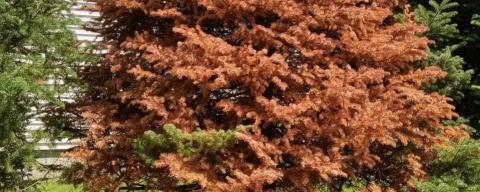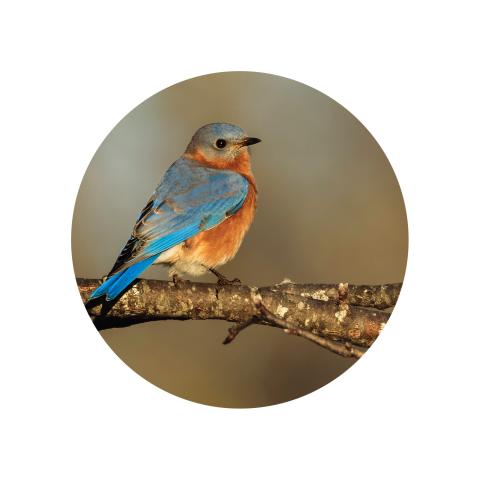The Balsam Woolly Adelgid
This month I want to chat a bit about our Balsam Fir trees. I have seen in my travels around the county, as well as a couple of specific visits to woodlots, some of our Balsam Fir trees turning brown and dying. After doing a little research and discussing this occurrence with some of our other county foresters, the culprit seems to be a small insect pest, the Balsam Woolly Adelgid.
The Balsam Woolly Adelgid (BWA), is a tiny, sapsucking insect that feeds on true firs, which here in northern New England means our Balsam Fir. The BWA is a native of Europe and was introduced into North America back in the early 1900’s. Although this insect pest has been in our forests for over 100 years, it has been kept mostly in check by our cold winter temperatures. This season, however, there seems to be a bit of an increase, somewhat due to the mostly mild winter in the region.
Although infestations of this pest may be difficult to find, there are a few things to look for. White woolly spots on the trunk may be present. These may be difficult to see, and even more difficult to differentiate from pitch spots. A small hand lens should assist with the differentiation.
There also may be swellings around buds and branch nodes of recent growth. This “gout phase” might be very noticeable and is likely most common in the upper crown, but below the highest branches.
Heavy infestations of this insect can kill a tree within three years, although its presence can create enough stress on the tree to make it susceptible to other potential pests and diseases. Some of these others are needle cast, and root rot.
Needle cast is a fungus that thrives and spreads during wet summers, then the following summer symptoms appear. These symptoms include the browning of needles and the dieback of branches. Above ground symptoms associated with root rot can include a general discoloration or yellowing of needles, delayed bud break, branch flagging, wilting of new growth, and death of the tree. There may or may not be any apparent reduction in the growth of diseased trees before they are ultimately killed.

This is a tree that exhibits no obvious signs of adelgid exposure, but obviously has deteriorated to the point of removal. The assumption here is an initial exposure from the insect, which has stressed the tree enough to allow needle cast to take hold. Other suspected factors leading to this rapid decline are the rapid and extreme changes in weather and site conditions. Moving from mild winter conditions, to drier than normal stretches during the spring, to wetter than normal late spring and summer, with an extremely cold snap late winter and a late spring freeze, are all things that can adversely affect our trees, especially those already stressed from other outside influences.
As your County Forester I am available to answer questions about the health of your trees. With a little knowledge, some research, and the assistance of other experts within UNH Cooperative Extension, we collectively will come up with possible answers and treatments.
Sources: Vermont Forest Health; Balsam Woolly Adelgid; April 2016 | UNH Cooperative Extension, A Walk in the Woods-Looking for Balsam Fir; 8/2016
Have a question about your woods? Contact your Extension County Forester today!
Do you love learning about stuff like this? Subscribe to the NH Woods & Wildlife Newsletter.
A quarterly newsletter providing private woodlot owners in New Hampshire with woodlot management news, pest updates, resources, and more.


